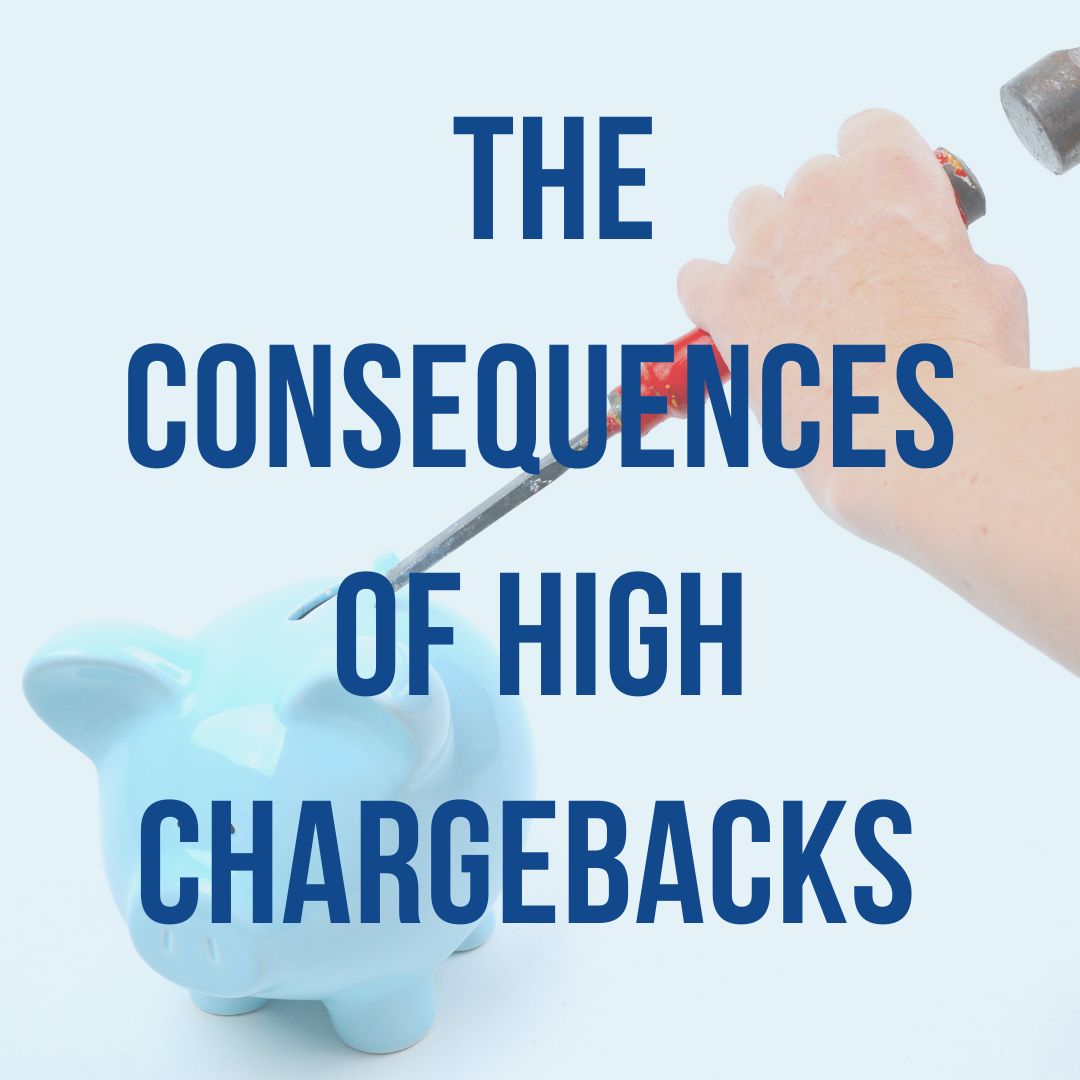 If you're going to accept credit cards online, you must have a robust fraud prevention strategy. Cyber criminals are incredibly nimble folk. And as such, the methods and avenues of ecommerce fraud continue to become more sophisticated with time. Fraud prevention measures that once worked well may no longer work in today’s landscape.
If you're going to accept credit cards online, you must have a robust fraud prevention strategy. Cyber criminals are incredibly nimble folk. And as such, the methods and avenues of ecommerce fraud continue to become more sophisticated with time. Fraud prevention measures that once worked well may no longer work in today’s landscape.
The cost of defending your business from payment fraud can seem significant. It can be anywhere from 1- 5% of operational costs. Especially if you have to turn to several different providers to source the different solutions you need. But the costs of fraud - lost revenue, high chargebacks, and the loss of customer loyalty that result from a breach - are much greater.
2020 proved to be a record year for ecommerce with more people shopping online than ever before. And it's looking like the trend will become the new normal. Unfortunately, with more online shopping, we also saw a significant increase in online fraud. And that is largely to be expected.
But this year experts are predicting another significant raise in losses due to fraud. A new Juniper Research study predicts eCommerce fraud losses to rise 18% over last year to $20 billion dollars in 2021.
What is most disconcerting is the amount of fraud attempts that were successful. This shows us that too many online merchants have weak security measures. This is possible due to perceived costs.
Every year, LexisNexis performs a study on the true cost of fraud to retail and eCommerce businesses. The 2020 edition had some interesting findings:
LexisNexis® Risk Solutions 2020 True Cost of FraudTM Study: E-commerce/Retail Edition
- Fraud is becoming more sophisticated and harder to detect. Businesses are experiencing challenges in many areas and across all channels.
- As mobile commerce channels increase, so do fraud attempts
- Fraud continues to increase across the board, but mid/large businesses are impacted more significantly than small businesses.
- Med to large size businesses are experiencing higher average volumes of fraud attacks which also come with steeper costs.
E-Commerce is more targeted by fraudsters than any other channel.
Unfortunately, online merchant sites are hack-able, making operating in the eCommerce world much more susceptible to fraud. While all businesses need to take steps and use security protocols to protect their customer’s private information, eCommerce businesses must go a step further.
Processing payments for eCommerce sites require more security protocols than a regular retail account. They are automatically considered a higher risk by the processing bank, and that makes it more expensive. This is because eCommerce sites are simply more prone to fraud than brick-and-mortar stores.
Increased fraud means businesses will most likely also see and increase in chargebacks. When good customers find out their payment information has been used fraudulently, they turn to their credit card company and file a chargeback.
Chargebacks cost businesses a lot of money. On top of the loss of revenue from the product, businesses also pay significant fees for every chargeback. There is also the cost of time and personnel dealing with and fighting chargebacks. But to make matters worse, if a business’s chargeback ratio gets too high, the bank can freeze or shut down their merchant account.
The study findings show us that the costs and impact to revenue is rising for retailers. Taking steps to mitigate fraud attempts is absolutely imperative for ecommerce merchants.
The best way to prevent fraud today is with a layered solution.
For fraud protection to be effective, each channel and type of transaction require specified solutions. When processing a transaction, criteria that are both physical and digital must be authenticated. In near real-time, they must confirm identity, payment information and weigh transaction risk.
Ecommerce businesses must create a layered approach. First, they must follow best practices. Transaction processes must employ multi-factor authentication. They’ll need to implement tools that leverage Artificial Intelligence and Machine Learning. And they must utilize automated chargeback and fraud management solutions.
No single fraud prevention measure can do it all. This requires layering AI, machine learning, and rules based fraud detection. And of course, human interaction.
Using Artificial Intelligence and Machine learning, you can detect fraud patterns that a human might miss. Rules based detection will flag exceptions that the AI might miss. It all works together.
User experience is top of mind for online retailers. Consumers today want a smooth and seamless experience across all marketing channels. Adding extra fraud prevention barriers at checkout adds to the friction for customers. Something no one wants.
But it's important to remember that customers are also concerned about fraud. And reducing their exposure to fraud improves their experience.
The goal is to create a system to detect and prevent fraud without creating excessive friction at checkout. A layered solution that integrates risk-appropriate identity verification and cybersecurity is the best method.
5 elements of a layered eCommerce fraud prevention strategy.
1. PCI Compliance
First of all, establish and maintain PCI Compliance. The Payment Card Industry has created a set of 12 basic requirements to meet PCI Data Security Standards. The 12 requirements establish a security protocol businesses can follow to help secure their site. They include things like firewalls, encryption of transmissions, protect stored data, install antivirus software, scan for malware, and regularly monitor and test networks.
Once businesses meet those standards they are required to conduct an annual site audit and review to make sure they maintain PCI Compliance. This is the first step in combating eCommerce fraud.
The good news is that most newer POS systems and gateways are built with these PCI standards in mind. So, when you open a merchant account with an experienced Merchant Service Provider, most of the PCI DSS requirements are already taken care of.
This removes much of the burden of PCI Compliance for the merchants. All merchants need to do is conduct regular monitoring and testing. And complete and submit their annual PCI Compliance.
2. Hosted Payment Payment Page
Accepting payments for goods involves capturing, storing, and transmitting sensitive payment card information. When a business does this, they are responsible for protecting that sensitive data. Which puts them at greater risk for fraud.
When you outsource a hosted payment page, you allow the professionals to handle data protection. The processor is responsible for storing and transmitting sensitive payment information, and they already meet stringent security standards. Payment data is encrypted before it transmits to the processor. From there it is tokenized before transmitting to the card issuer. This further protects sensitive data from prying eyes.
3. Integrate Robust Fraud Prevention Tools
Legacy fraud prevention tools such as CVV matching, address verification (AVS), and IP mapping are a great start. But they must be layered with more advanced technologies that use adaptive machine learning and AI.
Adaptive machine learning algorithms are capable of managing incredible amounts of intricate and diverse digital data.
With machine learning, the more data points you have, the stronger the results. This allows it to analyze several different data points simultaneously to make a real-time decision.
Types of Data Points that are analyzed include:
- Order data
- Account information
- Behavior data
- IP geolocation
- Device fingerprinting
- Address verification (AVS)
- Card Value Verification (CVV)
- Auto-flag high risk orders
- Shipping VS Address on file

4. reCAPTCHAs
Card “testing” is one of the most prominent schemes being used by fraudsters today. Fraudsters use computer generated scripts, or bots, to test stolen cards before trying to use them. Computer-generated scripts allow a fraudster to test thousands of stolen credit card credentials at a time.
Merchants without proper security are on the hook for processing fees and possibly more.eCommerce websites can protect their website from automated scripts by using a reCAPTCHA at checkout.
A reCAPTCHA is “a visual challenge designed to distinguish humans from automated scripts”. It uses an advanced risk-analysis engine to “catch” malicious software before it conducts illegal activities on your site.
reCAPTCHA also allows you to extend fraud protection across your entire site, not just select pages. And it easily integrates with your mobile application through API-based integration.
5. Choose an Advanced, Feature-rich Gateway
Not all gateways are created equal. Once approved, as an online merchant service provider, we will provide you with a secure gateway. The gateway allows you to securely transmit transaction information to the acquiring banks and back to complete each transaction. But the best gateways also go the extra mile to protect your customers and your business.
Before, merchants would have to bring in third party software and applications to create a comprehensive solution.
Today, savvy eCommerce merchants have access to cutting-edge gateways that provide both chargeback monitoring and advanced fraud detection in addition to standard measures. Payer authentication tools, fraud detections services, and advanced chargeback monitoring come together in one robust solution. All private information is tokenized and stored outside the native server. This better protects private information and transaction data from hackers. And it keeps the merchant twice removed if a data breach were to happen.
Get your comprehensive eCommerce merchant account solution today.
Due to the nature of online sales and the propensity for credit card fraud, eCommerce sites are a bit higher risk to the bank than the typical merchant. Online merchants have to face a few hurdles when looking for a reliable eCommerce merchant account. But when the right processor’s got your back, you can rest assured that the process will go smoothly.
Your merchant account provider should support you with more than just a way to accept payments. They should support and protect all business processes that involve payments. At MonerePay, we’ve curated a comprehensive solution that combines secure payments, enhanced payment features, fraud prevention, and chargeback management. And so much more.
Our proprietary gateway employs enhanced Fraud Detection Services in addition to strong payer authentication tools. Our gateway is jam-packed with other useful features specifically designed for our merchant’s convenience. Suspicious Transaction Screening and Tokenized Customer Vaults round out a solid security strategy. Features such as Electronic Invoicing, Recurring Billing, one-click pay, and automatic card updating are just a few of the conveniences built in.
You need more than simply the ability to accept payments. Empower your eCommerce business with a unique payment processing solution and enhanced gateway that fortifies your success efforts.

(1).jpg)



.jpg)
